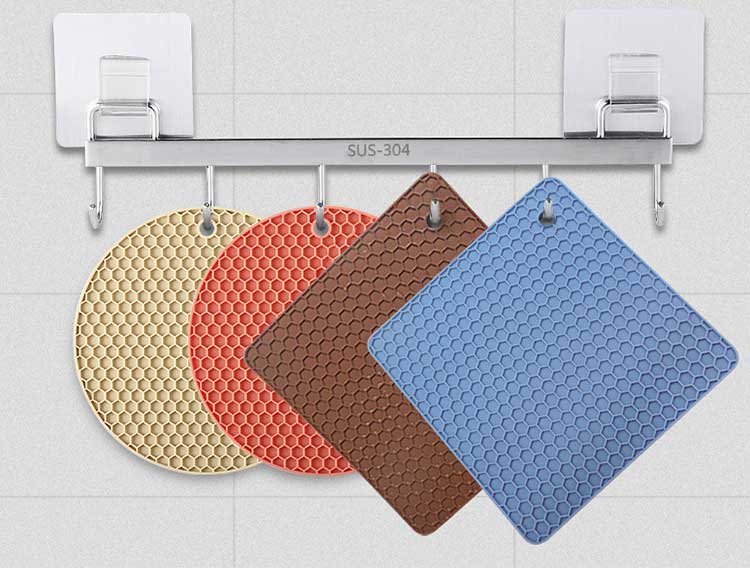Many baby products claim to be eco-friendly, but how do silicone mats really measure up in daily use?
Yes, eco-friendly silicone mats are a sustainable, non-toxic, and reusable alternative to plastic or disposable options. They reduce waste, are easy to clean, and last for years.
More parents and manufacturers are switching to silicone mats for their safety and sustainability. But what makes them truly eco-friendly, and how do they compare to other materials? Let’s dive in.
What Makes Silicone Mats Eco-Friendly?
Silicone mats claim to be sustainable, but are they truly better for the environment?
Silicone mats are reusable, non-toxic, and long-lasting, which reduces waste and resource consumption over time. Their durability and safety make them a smart eco-friendly option.

To understand why silicone mats are considered eco-friendly, I had to look at their full lifecycle. Unlike plastics, silicone is derived from silica—essentially sand—making it abundant and less harmful to produce. Once formed, silicone can withstand extreme temperatures, heavy use, and frequent washing without degrading. That’s a big deal in baby products where hygiene and durability matter.
Here’s a breakdown of how silicone compares to other common materials:
| Feature | Silicone | Plastic | Fabric |
|---|---|---|---|
| Reusability | High | Low | Medium |
| Durability | Excellent | Poor | Moderate |
| Chemical Safety | Non-toxic | Can leach toxins | Depends on dyes |
| Biodegradability | Not biodegradable | Not biodegradable | Biodegradable |
| Eco-impact of Use | Low over time | High | Medium |
Although silicone is not biodegradable, it’s not single-use. A high-quality mat can last for years without tearing, cracking, or staining. That dramatically reduces the number of mats ending up in landfills.
Are Silicone Mats Safe for Babies?
Parents worry about material safety. Can silicone mats be trusted for daily use with infants?
Yes, food-grade silicone mats are BPA-free, phthalate-free, and non-toxic, making them one of the safest materials for babies.
I had the same concern when choosing feeding mats for my child. I read every label and asked every supplier about certifications. The good news is, many silicone mats used in baby products are made from LFGB- or FDA-approved food-grade silicone. This kind of silicone doesn’t contain harmful chemicals like BPA or phthalates, which are often found in plastics.
In my experience with product development, safety documentation is key. Every silicone product we supply comes with testing reports. That transparency builds trust with our clients and end users—especially parents. When Little Steps Baby Care was testing samples, they needed mats that not only looked good but met safety requirements in the US and Europe. Silicone passed with flying colors.
Some key safety certifications to look for:
- FDA Approved (US)
- LFGB Certified (EU)
- BPA and Phthalate Free
- Heat Resistance over 200°C
- Odorless and Non-Stick
Safety is not just about materials. It’s also about how the mat performs when heated, washed, or handled roughly—something that happens daily in a baby’s world.
How Do Silicone Mats Support Sustainability Goals?
Eco-products must align with broader goals. How do silicone mats help companies go green?
Silicone mats reduce single-use waste, lower carbon footprints through reuse, and support brands focused on long-term sustainability.

When developing baby feeding lines for brands like John Doe’s company, sustainability wasn’t just a buzzword—it was a requirement. John needed a supplier who could deliver on quality, compliance, and green values. Silicone gave us that leverage.
Here’s how silicone mats align with sustainability goals:
1. Less Waste Over Time
One silicone mat can replace hundreds of paper or plastic mats. That alone reduces production emissions and landfill waste.
2. Reduced Water and Energy in Cleaning
Silicone is non-stick and easy to wipe clean. No need for soaking, scrubbing, or high-powered dishwashing cycles. That’s less water, soap, and energy.
3. Lightweight and Durable for Shipping
They’re strong but light, which cuts down shipping costs and fuel use.
4. Long Lifecycle
Longer use means fewer replacements. This lowers the environmental toll from manufacturing, packaging, and shipping over time.
To quantify this, I helped one client calculate a five-year sustainability impact. Switching from disposable mats to silicone cut down their plastic waste by 85% and saved over $30,000 in replacement costs. That made their brand not just greener, but more profitable.
What Features Should You Look for in a Good Silicone Mat?
Not all silicone mats are equal. What features define a high-quality, eco-friendly option?
A good silicone mat should be thick, flexible, odorless, BPA-free, heat-resistant, and come with safety certifications. Customization adds value.
Through hundreds of samples and client trials, I’ve learned what separates premium silicone mats from the rest. It’s not just about the material—it’s the design and performance. Many manufacturers cut corners by using fillers, which make mats smell bad or crack easily.
I always advise clients to test for the following:
| Feature | Why It Matters |
|---|---|
| Thickness (at least 1.5mm) | Thicker mats won’t tear or deform easily |
| Flexibility | Should roll/fold without creasing or cracking |
| Odorless | No smell = no toxic filler materials |
| Heat Resistance | Must withstand boiling and microwave temperatures |
| Easy to Clean | Should be wipeable and dishwasher safe |
| Certification | FDA, LFGB, BPA-free is a must |
| Custom Printing | Adds branding, educational or decorative appeal |
When John Doe requested a line of mats with fun prints and suction bases for toddlers, we delivered samples with colorful graphics and embedded company logos. These value-added features helped Little Steps stand out while maintaining their eco-friendly mission.
Conclusion
Silicone mats are a smart, safe, and sustainable choice for parents and brands alike.